Solution
-
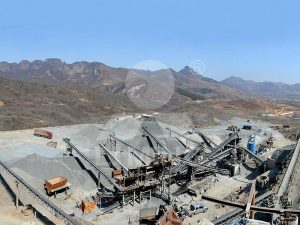
Comprehensive Guide to Configuring an 800-1000 TPH River Pebble Crushing Production Line
Read moreConfiguring a high-capacity river pebble crushing production line (800-1000 tons per hour) requires careful planning, equipment selection, and budgeting. This article provides a detailed breakdown of the cost factors and key components involved in setting up such a large-scale operation. Key Components of an 800-1000 TPH Line Primary Crushing: A robust jaw crusher (e.g., PE 1200×1500 or larger) handles initial size reduction of raw pebbles. Secondary Crushing: Cone crushers (e.g., HPT series) or impact crushers further reduce material to desired sizes. Tertiary Crushing & Shaping: VSI (Vertical Shaft Impact) crushers (e.g., 5X series) produce fine aggregates and improve particle shape. Screening & Washing: Circular vibrating screens (e.g., 3YZS2460) and wheel sand washing machine (e.g., XSD3016) ensure product quality and cleanliness. Feeding & Conveying: Vibrating feeders (e.g., GZD-1300×4900) and heavy-duty conveyors maintain material flow. Cost Breakdown The total cost varies based on equipment quality, automation, and additional features like dust suppression systems. Here’s a general estimate: Entry-Level Setup: 800,000–1.2 million (basic models with moderate output). Mid-Range Setup: 1.5–2.5 million (high-efficiency crushers, advanced screens, and automated controls). Premium Setup: 3–5 million (fully integrated systems with washing, recycling, and smart monitoring). Factors Influencing Costs Equipment Brand & Quality: Leading brands like Liming, Sandvik, and Metso offer durable machinery but command higher prices. Customization: Tailored configurations for specific pebble hardness or output requirements add costs. Location & Labor: Shipping, installation, and local labor rates affect total expenses. After-Sales Support: Extended warranties, spare parts, and technical training increase upfront costs but improve long-term ROI. ROI Considerations High-capacity lines serve infrastructure…
-
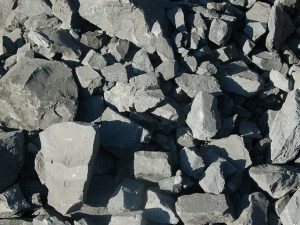
Gangue Crushing & Processing: A Sustainable Solution with LIMING Heavy Industry
Read moreCoal gangue, a byproduct of coal mining and washing, poses significant environmental challenges due to its accumulation and low utilization rate. However, modern crushing and processing technologies have transformed coal gangue from waste into valuable resources, such as construction aggregates, bricks, and raw materials for industrial applications. LIMING Heavy Industry, a leading global manufacturer of crushing and grinding equipment, provides efficient and eco-friendly solutions for gangue recycling, helping industries achieve economic and environmental benefits. Why Process Coal Gangue? Environmental Protection – Reduces land occupation and prevents soil and water pollution. Resource Utilization – Can be repurposed into: Construction materials (aggregates, cement additives, bricks) Energy production (coal gangue power generation) Soil improvement & land reclamation Economic Value – Lowers raw material costs and generates new revenue streams. Gangue Crushing & Processing Solutions by LIMING 1. Primary Crushing: Jaw Crusher (C6X Series) Application: Coarse crushing of large gangue blocks (≤1200mm). Advantages: High crushing ratio, low energy consumption, durable structure. 2. Secondary Crushing: Impact Crusher (CI5X Series) / Cone Crusher (HPT Series) CI5X Impact Crusher – Ideal for medium-hard gangue, producing cubic-shaped aggregates. HPT Cone Crusher – Best for fine crushing with high efficiency and automatic hydraulic adjustment. 3. Fine Grinding: Vertical Mill (LM & LUM Series) / Raymond Mill (5X Series) LM Vertical Mill: For large-scale gangue powder production (80-400 mesh), widely used in cement additives. LUM Ultrafine Mill: Produces ultra-fine powder (325-2500 mesh) for high-value applications. 5X Pendulum Roller Mill: Energy-efficient grinding for coal gangue combustion in power plants. 4. Mobile Crushing Solution (K3 Series Mobile…
-

High-Efficiency Dolomite Crushing & Processing Solutions
Read moreDolomite, a versatile calcium-magnesium carbonate mineral, is widely used in construction, ceramics, glass, and environmental protection industries. To meet global demand for high-quality dolomite powder, Liming Heavy Industry offers advanced crushing and processing solutions tailored for efficient production and cost optimization. Dolomite Crushing Process The crushing stage is critical for reducing large dolomite blocks to manageable sizes. Liming’s jaw crushers and impact crushers ensure reliable primary and secondary crushing. For example, the PEW series jaw crusher handles initial size reduction (150-900 mm), while the PF series impact crusher achieves fine (15-50 mm) with minimal wear. These machines feature robust structures and adjustable discharge ports, adapting to diverse feed materials. Dolomite Grinding & Classification After crushing, dolomite undergoes grinding to achieve desired fineness. Liming’s MTW European-style trapezoidal mill and TGM series super-pressure trapezoidal mill are ideal for ultra-fine grinding (D97 ≤ 5 μm). These mills integrate drying, grinding, and classification, reducing energy consumption by 30% compared to traditional systems. The closed-circuit design ensures uniform particle distribution, with particles recycled for re-grinding. Why Choose Liming? 30+ Years of Expertise: Customized solutions for non-metallic mineral processing. Energy Efficiency: Low power consumption and durable components. Global Support: Professional engineers provide technical guidance and after-sales service. Customer Success A client in China’s construction sector reported a 50% increase in production efficiency after adopting Liming’s mobile crusher, meeting demands for 100 km of downstream markets. Liming Heavy Industry’s dolomite crushing and grinding systems combine innovation and reliability, ensuring high-quality output and operational cost savings. For tailored solutions, contact Liming’s team to…
-

Talc Crushing & Processing: Techniques, Equipment, and Applications
Read moreTalc, a soft metamorphic mineral, is widely used in industries ranging from cosmetics to construction. Its value lies in properties like softness, purity, and thermal stability, which require precise crushing and processing to unlock. This article explores the technical workflows and equipment critical to transforming raw talc into high-quality powder. 1. Talc Crushing Process The initial stage involves reducing large talc rocks into smaller particles. Primary crushing is typically done using jaw crushers or impact crushers to break down boulders into 50-100mm fragments . Secondary fine crushing employs cone crushers or hammer mills to achieve 5-20mm particle sizes, ensuring uniformity for downstream processing. 2. Grinding and Classification After crushing, talc undergoes grinding to produce fine powders. Common methods include: Ball mills for coarse grinding (20-75µm) Raymond mills or vertical roller mills for ultrafine particles (2-10µm) Air classifiers separate oversized particles, ensuring consistent fineness. 3. Surface Treatment and Drying To enhance applications like lubricity or pigment dispersion, talc powder often undergoes surface modification using stearic acid or silane agents. Drying processes remove moisture, critical for maintaining powder flowability and storage stability. 4. Key Equipment Innovations Modern plants integrate: Mobile crushers for flexible on-site processing Closed-circuit systems combining crushers and classifiers Energy-efficient motors reducing operational costs 5. Industry Applications Processed talc finds use in: Plastics (improves thermal stability) Cosmetics (soft texture in powders) Paper (gloss enhancement) Rubber (reinforcement filler) Ceramics (glaze formulation) Effective talc processing hinges on optimizing crushing/grinding parameters while meeting industry-specific particle size requirements. Advanced equipment and quality control ensure talc remains a versatile material…
-
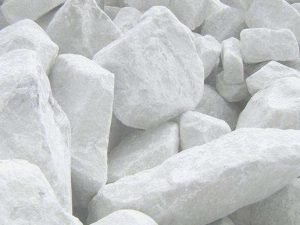
Calcite Crushing & Processing: A Comprehensive Guide
Read moreCalcite (calcium carbonate) is a vital raw material for industries ranging from construction to pharmaceuticals. Its processing involves precise crushing and grinding to achieve specific particle sizes, ensuring optimal performance in end-use applications. Below is an overview of the calcite crushing and processing workflow, equipment selection, and quality control practices. 1. Calcite Crushing Process The crushing stage reduces large calcite blocks to manageable sizes. A typical workflow includes: Primary Crushing: Jaw crushers or cone crushers break down raw calcite into 100-300mm fragments. Screening: Vibrating screens separate fine particles from coarse ones, directing oversized material back for re-crushing. Secondary Crushing: Impact crushers further reduce particles to 10-50mm, ensuring uniformity for downstream processing. This closed-circuit system maximizes efficiency by recycling oversized material, minimizing waste. 2.Calcite Grinding & Processing After crushing, calcite undergoes grinding to achieve micron-level fineness: Ball Mills/Raymond Mills: These grind calcite into powder (200-325 mesh) for applications like coatings and plastics. Ultrafine Grinding: High-pressure mills produce 2500 mesh powder for ceramics and specialty chemicals. Quality control involves real-time monitoring of particle size distribution and moisture content to meet industry standards. 3.Key Equipment for Calcite Processing Crushers: Jaw crushers (for initial reduction), impact crushers (for fine crushing), and mobile crushers (for on-site operations) Grinding Mills: Ball mills, vertical roller mills, and air classifiers for precise powder grading Auxiliary Systems: Vibrating feeders, conveyors, and dust collectors ensure safe, efficient operations. 4. Applications of Processed Calcite Processed calcite finds use in: Construction: As filler in cement, gypsum boards, and paints Plastics/Rubber: Enhances hardness and thermal resistance Paper Coatings: Improves gloss…
-

Optimizing Concrete Crushing & Processing
Read moreConcrete crushing and processing have become essential in sustainable construction, addressing both waste management and resource efficiency. With advanced technologies from industry leaders like Liming Heavy Industry, the sector now achieves higher productivity while minimizing environmental impact. 1. Streamlined Processing Workflow Modern concrete recycling involves three key stages: Primary Crushing: Jaw crushers (e.g., Liming’s PE Series) break down large concrete debris into 150-300 mm fragments. These robust machines reduce energy consumption by 15-20% compared to traditional models through hydraulic adjustment systems 6. Secondary Refinement: Cone crushers (e.g., HP200 Multi-Cylinder Hydraulic Cone Crusher) further process materials to 20-40 mm. Liming’s HPT Series enhances crushing efficiency by 30% through laminated crushing principles, ensuring uniform particle size 6. Tertiary Shaping: Vertical shaft impact (VSI) crushers produce high-quality aggregates for road bases or prefab concrete. 2. Technological Innovations Liming Heavy Industry integrates smart solutions to optimize operations: Mobile Crushing Plants: Combining jaw crushers, cone crushers, and vibrating screens, these units process 200-500 t/h on-site, reducing transportation costs by 40% . Automated Control Systems: Real-time monitoring of crusher parameters (e.g., feed size, motor load) prevents overloading and extends equipment lifespan. Wear-Resistant Materials: Composite alloy components in crusher liners reduce replacement frequency by 50%, lowering maintenance costs. 3. Environmental & Economic Benefits Recycled Aggregates: Over 90% of demolished concrete can be repurposed for new construction, cutting raw material demand. Liming’s VU Sand-Making System produces ASTM-compliant recycled sand with ≤3% silt content . Carbon Footprint Reduction: Processing 1 ton of concrete waste saves 1.36 tons of CO₂ emissions versus landfill disposal. Case…
-
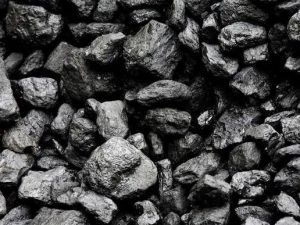
Optimized Coal Crushing & Processing
Read moreCoal crushing and processing play a pivotal role in energy production and industrial applications, ensuring efficient utilization of coal resources while minimizing environmental impacts. LIMING Heavy Industry, a leader in mining machinery, offers innovative solutions tailored to enhance coal processing efficiency, reduce energy consumption, and improve product quality. 1. Key Stages in Coal Crushing & Processing Primary Crushing: Large coal lumps are reduced to smaller particles (≤150 mm) using jaw crushers or hammer crushers, ensuring uniform feed for downstream processes. Secondary Crushing: Cone crushers or impact crushers further refine coal particles to 20–30 mm, optimizing combustion efficiency and transportability. Screening and Grading: Vibrating screens separate coal into size-specific fractions, ensuring compliance with industrial requirements (e.g., power plants or coking facilities). Dust Control: Integrated dust recovery systems mitigate airborne particles, aligning with environmental regulations. 2. LIMING Heavy Industry’s Cutting-Edge Equipment LIMING’s coal processing machinery combines robust design with smart automation, delivering unmatched performance: SCF Series Dual-Rotor Crushers: Capable of handling high-moisture or sticky coal without clogging. Adjustable rotor gaps (e.g., SCF800×800 model) enable precise control over output size (≤15 mm). Energy-efficient operation with dual 55 kW motors, reducing power consumption by 20% compared to conventional crushers9. Mobile Crushing Stations: Ideal for decentralized mining sites, offering flexibility and rapid deployment. Integrated screening and conveying systems streamline on-site processing. Vertical Shaft Impact (VSI) Crushers: Produce cubical coal particles for improved combustion efficiency. 3. Process Optimization Strategies Pre-Drying Technology: Reduces coal moisture before crushing, enhancing equipment longevity and reducing energy use in thermal plants5. Automated Control Systems: Real-time monitoring…
-
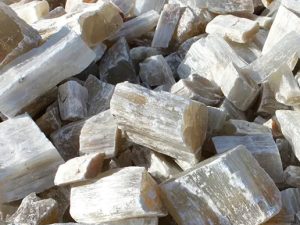
Gypsum Crushing & Processing: A Comprehensive Solution by Liming Heavy Industry
Read moreGypsum, a versatile mineral widely used in construction and agriculture, requires efficient crushing and processing to achieve optimal particle size and purity. As a leading mining equipment manufacturer, Liming Heavy Industry provides tailored solutions for gypsum treatment with high automation and energy efficiency. 1. Key Processing Stages Primary Crushing: Liming’s PEW Jaw Crusher 1 handles large gypsum rocks (≤1200mm) with a 10:1 reduction ratio, ensuring uniform feeding for downstream processes. Its hydraulic adjustment system minimizes downtime during maintenance. Secondary Crushing: The CI6X Impact Crusher excels in medium/fine crushing, producing 0-30mm aggregates. Its modular design allows quick replacement of wear-resistant components like blow bars. Grinding & Calcination: For building gypsum production, Liming’s LM Vertical Mill achieves 80-600 mesh fineness with 30% less energy consumption compared to traditional ball mills 13. Paired with a rotary kiln, it enables precise temperature control (150-180°C) for β-hemihydrate gypsum. 2. Technical Advantages of Liming Solutions Intelligent Control: Integrated PLC systems monitor real-time parameters (e.g., feed rate, motor load) and auto-adjust operations to maintain 90%+ operational efficiency. Dust Suppression: Multi-stage bag filters and water spray systems reduce PM2.5 emissions to <10mg/m³, exceeding ISO 8573-1 standards 6. Mobile Configuration: The K3 Series Portable Crushing Plant 4 combines jaw crusher, vibrating screen, and belt conveyors on a single chassis, ideal for remote gypsum quarries. 3. Recommended Production Lines Project Scale Equipment Configuration Output Capacity Small (<100t/d) PEW860 Jaw Crusher + MTW138 Grinding Mill 50-80t/h Medium (300t/d) CI5X1520 Impact Crusher + LM1900 Vertical Mill 150-200t/h Large (>500t/d) K3 Portable Plant + LUM1125 Vertical Roller Mill…
-
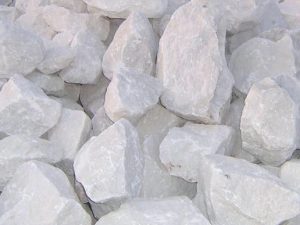
Calcium Carbonate Crushing & Processing
Read moreCalcium carbonate (CaCO₃), a versatile mineral widely used in industries like plastics, paints, and construction, requires precise crushing and processing to meet diverse application standards. This article explores advanced methodologies to optimize its production efficiency and product quality. 1. Crushing Technology Primary crushing involves coarse grinding using jaw or hammer crushers to reduce raw limestone or marble into 50-100 mm particles. Secondary grinding with roller or ball mills further refines the material to 10-50 µm. For ultrafine applications (<1 µm), advanced techniques like high-pressure homogenization (e.g., explosive spraying at 0.1 mm nozzles under superhigh pressure . 2. Surface Modification To improve compatibility with organic matrices, surface treatment is crucial. Bimolecular coating methods, where agents like stearic acid or aluminum chloride are applied based on particle size (dp), ensure controlled hydrophobicity and dispersion . For example, adding 0.1–0.5% barium carbonate (BaCO₃) during processing stabilizes crystal growth and reduces agglomeration . Modified particles exhibit >99% activation rates and superior mechanical properties in composites . 3. Dust Control and Resource Utilization Crushing generates significant dust, which is mitigated through closed-loop systems with cyclones and bag filters. Recent innovations repurpose waste gases (e.g., CO₂ from industrial exhaust) for carbonation reactions, reducing emissions and raw material costs . For instance, integrating melamine tail gas into Ca(OH)₂ suspensions produces nano-CaCO₃ with 40–80 nm particle sizes, enhancing sustainability . 4. Quality Control and Dispersion Post-processing, centrifugal dispersion devices are used to break agglomerates. Multi-stage collisions between particles and centrifugal disks (e.g., four-phase dispersion . 5. Environmental and Cost Efficiency Optimized energy consumption is achieved via automated grinding controls and waste heat recovery. For example,…
-
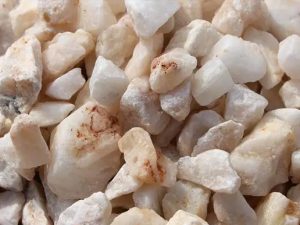
Optimized Barite Crushing & Processing
Read moreBarite (BaSO₄), a critical mineral for industries such as oil drilling, coatings, and ceramics, requires efficient crushing and processing to meet diverse application standards. This article outlines optimized workflows and technologies to enhance productivity, reduce costs, and ensure environmental compliance. 1. Crushing Process Optimization The crushing stage is pivotal for reducing barite to desired particle sizes. Modern processing plants typically integrate multi-stage systems: Primary Crushing: Jaw crushers (e.g., LIMING’s models) handle coarse materials, achieving reduction ratios of 10–35 . Fine Grinding: Vertical shaft impact (VSI) crushers or hammer mills generate fine aggregates (≤5 mm), critical for applications like drilling mud additives . 2. Key Advancements: Automation: Real-time monitoring systems adjust feed rates and screen settings, minimizing over-processing. Material Selection: High-chromium white cast iron (HCWCI) hammers reduce wear, extending equipment lifespan . Vibrating Screens: Separate oversized particles for reprocessing, ensuring product consistency . Innovation: Closed-circuit systems with classifiers recycle undersized particles, boosting yield by 15–20% . Waste Valorization: Tailings are reused in cement or asphalt production, minimizing landfill dependency. 3. Application-Specific Optimization Drilling Mud Additives: Barite’s high density (4.5 g/cm³) stabilizes boreholes. Processing lines prioritize particle uniformity and low iron contamination . Ceramics and Coatings: Ultra-fine grinding (<10 μm) enhances opacity and durability in products like glossy paints . Optimized barite crushing and processing hinge on integrating advanced machinery, automation, and sustainable practices. By leveraging technologies like HCWCI components and closed-circuit systems, LIMING manufacturers can achieve higher efficiency, lower costs, and compliance with global environmental standards. Continuous innovation in material science and process engineering will further…
